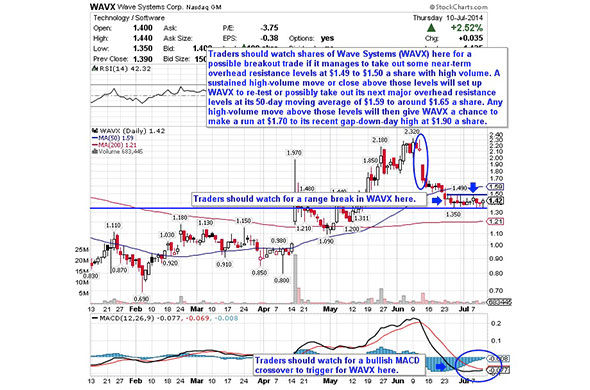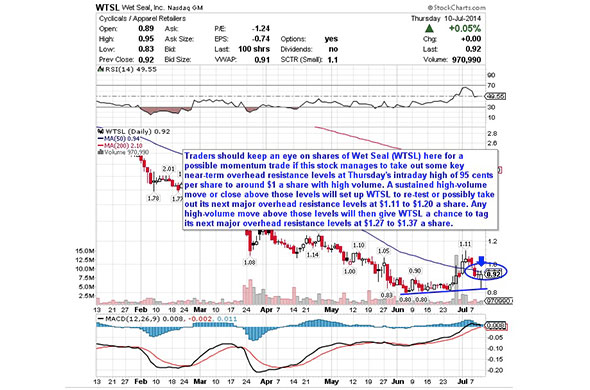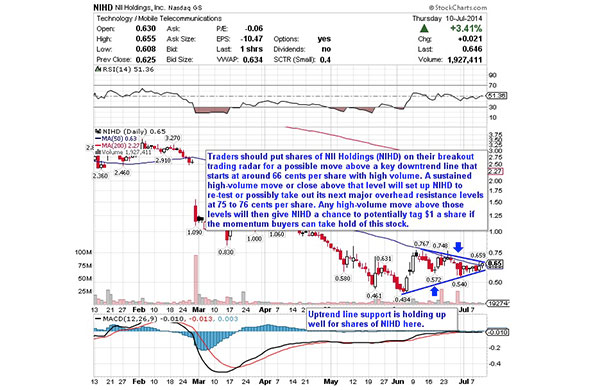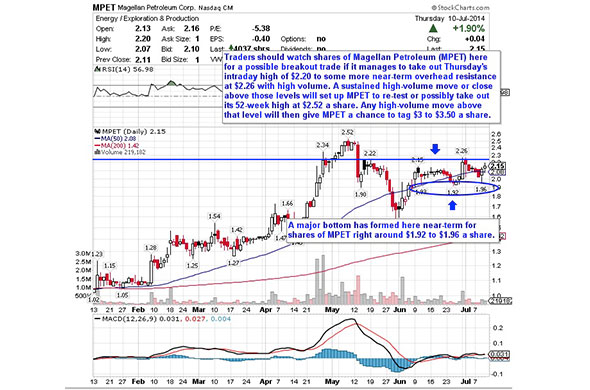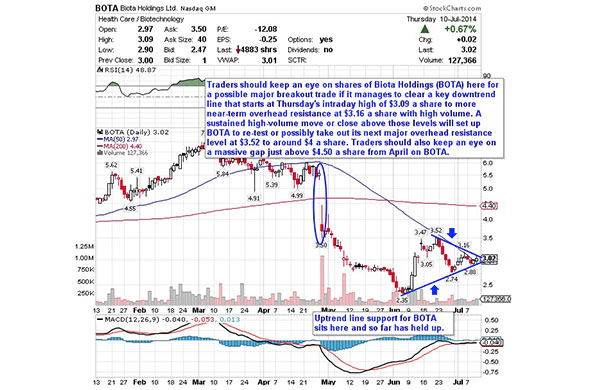According to GuruFocus Insider Data, the recent CFO sales were: American Tower Corp, Western Refining Inc, and Foot Locker Inc.
American Tower Corp (AMT): EVP & CFO Thomas A Bartlett sold 50,001 Shares
On 01/21/2014, EVP & CFO Thomas A Bartlett sold 50,001 shares at an average price of $83.70. The price of the stock has increased by 9.49% since. American Tower Corp has a market cap of $36.27 billion and its shares were traded at around $91.64. The company has a P/E ratio of 62.70 and P/S ratio of 10.32 with a dividend yield of 1.34%. Over the past 10 years, American Tower Corp had an annual average earnings growth of 12.90%. GuruFocus rated American Tower Corp the business predictability rank of 3-star.
American Tower Corp announced their 2014 first quarter results with revenues of $984.1 million and gross profit of $723.32 million; the net income was $202.5 million. The 2013 total revenue was $3.36 billion, a 17% increase from the 2012 total revenue. The 2013 gross profit was $2.5 billion, a 16% increase from the 2012 gross profit. The 2013 net income was $551.3 million.
On 07/09/2014, EVP, Int'l Operations William H Hess sold 80,000 shares at an average price of $90.45. The price of the stock has increased by 1.32% since. On 04/1/70214, Director Raymond P Dolan sold 10,000 shares at an average price of $83. The price of the stock has increased by 10.41% since. On 04/01/2014, EVP, Chief Admin Officer & GC Edmund Disanto sold 50,000 shares at an average price of $81.24. The price of the stock has increased by 12.8% since.
Western Refining Inc. (WNR): CFO Gary R Dalke Sold 20,000 Shares
On 07/08/2014, CFO Gary R Dalke sold 20,000 shares at an average price of $40.58. The price of the stock has decreased by 0.22% since. Western Refining Inc. has a market cap of $4.15 billion and its shares were traded at around $40.49. The company has a P/E ratio of 14.70 and P/S ratio of 0.36 with a dividend yield of 2.27%.
Western Refining Inc. announced their 2014 first quarter results with revenues of $3.73 billion and gross profit of $319.6 million; the net income was $85.55 million. The 2013 total revenue was $10.1 billion, a 6% increase from the 2012 total revenue. The 2013 gross profit was $821.76 million, an 11% decrease from the 2012 gross profit. The 2013 net income was $276 million.
On 06/23/2014, Director Ralph A Schmidt sold 25,000 shares at an average price of $42.08. The price of the stock has decreased by 3.78% since. On 05/29/2014, Sr. VP – Treasurer Jeffrey S Beyersdorfer sold 5,000 shares at an average price of $41. The price of the stock has decreased by 1.24% since. On 05/16/2014, President and CEO Jeff A Stevens sold 334 shares at an average price of $39.64. The price of the stock has increased by 2.14% since.
Foot Locker Inc. (FL): EVP and CFO Lauren B Peters sold 25,000 Shares
On 07/10/2014, EVP and CFO Lauren B Peters sold 25,000 shares at an average price of $50.75. The price of the stock has decreased by 1.52% since. Foot Locker Inc. has a market cap of $7.23 billion and its shares were traded at around $49.98. The company has a P/E ratio of 16.40 and P/S ratio of 1.11 with a dividend yield of 1.64%. Over the past 10 years, Foot Locker Inc. had an annual average earnings growth of 6.30%.
Foot Locker Inc. announced their 2014 second quarter results with revenues of $1.87 billion and gross profit of $646 million; the net income was $162 million. The 2014 total revenue was $6.5 billion, a 5% increase from the 2013 total revenue. The 2014 gross profit was $2.13 billion, a 5% increase from the 2013 gross profit. The 2014 net income was $429 million.
On 04/17/2014, Director Jarobin Jr Gilbert sold 3,000 shares at an average price of $45.42. The price of the stock has increased by 10.04% since. On 03/26/2014, Director Matthew M McKenna sold 2,175 shares at an average price of $46.08. The price of the stock has increased by 8.46% since. On 03/19/2014, SVP & Chief Accounting Officer Giovanna Cipriano sold 16,459 shares at an average price of $46.41. The price of the stock has increased by 7.69% since.
| Currently 0.00/512345 Rating: 0.0/5 (0 votes) | |

Subscribe via Email

Subscribe RSS Comments Please leave your comment:
More GuruFocus Links
| Latest Guru Picks | Value Strategies |
| Warren Buffett Portfolio | Ben Graham Net-Net |
| Real Time Picks | Buffett-Munger Screener |
| Aggregated Portfolio | Undervalued Predictable |
| ETFs, Options | Low P/S Companies |
| Insider Trends | 10-Year Financials |
| 52-Week Lows | Interactive Charts |
| Model Portfolios | DCF Calculator |
RSS Feed  | Monthly Newsletters |
| The All-In-One Screener | Portfolio Tracking Tool |

MORE GURUFOCUS LINKS
| Latest Guru Picks | Value Strategies |
| Warren Buffett Portfolio | Ben Graham Net-Net |
| Real Time Picks | Buffett-Munger Screener |
| Aggregated Portfolio | Undervalued Predictable |
| ETFs, Options | Low P/S Companies |
| Insider Trends | 10-Year Financials |
| 52-Week Lows | Interactive Charts |
| Model Portfolios | DCF Calculator |
RSS Feed  | Monthly Newsletters |
| The All-In-One Screener | Portfolio Tracking Tool |
AMT STOCK PRICE CHART

91.64 (1y: +20%) $(function(){var seriesOptions=[],yAxisOptions=[],name='AMT',display='';Highcharts.setOptions({global:{useUTC:true}});var d=new Date();$current_day=d.getDay();if($current_day==5||$current_day==0||$current_day==6){day=4;}else{day=7;} seriesOptions[0]={id:name,animation:false,color:'#4572A7',lineWidth:1,name:name.toUpperCase()+' stock price',threshold:null,data:[[1373864400000,76.16],[1373950800000,74.71],[1374037200000,73.87],[1374123600000,74.44],[1374210000000,75.13],[1374469200000,74.32],[1374555600000,74.75],[1374642000000,73.94],[1374728400000,72.31],[1374814800000,72.58],[1375074000000,72.42],[1375160400000,72.67],[1375246800000,70.79],[1375333200000,71.28],[1375419600000,70.5],[1375678800000,70.94],[1375765200000,70.27],[1375851600000,69.09],[1375938000000,68.99],[1376024400000,70.16],[1376283600000,69.66],[1376370000000,69.28],[1376456400000,69.7],[1376542800000,69.48],[1376629200000,68.58],[1376888400000,68.36],[1376974800000,69.38],[1377061200000,69.03],[1377147600000,68.88],[1377234000000,70.06],[1377493200000,69.94],[1377579600000,70.06],[1377666000000,69.09],[1377752400000,69.69],[1377838800000,69.49],[1378184400000,69.23],[1378270800000,69.24],[1378357200000,68.75],[1378443600000,71.91],[1378702800000,74.26],[1378789200000,74.58],[1378875600000,75.02],[1378962000000,74.12],[1379048400000,73.71],[1379307600000,74.27],[1379394000000,73.92],[1379480400000,75.75],[1379566800000,74.82],[1379653200000,73.92],[1379912400000,72.96],[1379998800000,72.85],[1380085200000,73.77],[1380171600000,74.63],[1380258000000,74.52],[1380517200000,74.13],[1380603600000,74.06],[1380690000000,73.99],[1380776400000,73.43],[1380862800000,72.69],[1381122000000,73.03],[1381208400000,71.89],[1381294800000,71.62],[1381381200000,73.59],[1381467600000,74.44],[1381726800000,74.64],[1381813200000,74.73],[1381899600000,77.12],[1381986000000,79.34],[1382072400000,79.01],[1382331600000,79.51],[1382418000000,80.13],[1382504400000,79],[1382590800000,80.38],[1382677200000,80.82],[1382936400000,80.3],[1383022800000,80.29],[1383109200000,80.69],[1383195600000,79.35],[1383282000000,79.37],[1383544800000,79],[1383631200000,78.6],[1383717600000,79.53],[1383804000000,78.77],[1383890400000,77.79],[1384149600000,77.45],[1384236000000,77.96],[1384322400000,78.17],[1384! 408800000,79.1],[1384495200000,79.28],[1384754400000,78.57],[1384840800000,78.1],[1384927200000,78.13],[1385013600000,77.59],[1385100000000,77.28],[1385359200000,77],[1385445600000,78.03],[1385532000000,78.37],[1385704800000,77.77],[1385964000000,78.21],[1386050400000,77.71],[1386136800000,77.43],[1386223200000,77.75],[1386309600000,78.08],[1386568800000,78.84],[1386655200000,79.21],[1386741600000,77.81],[1386828000000,76.69],[1386914400000,76.76],[1387173600000,76.09],[1387260000000,76.39],[1387346400000,78.22],[1387432800000,78.11],[1387519200000,77.95],[1387778400000,78.42],[1387864800000,78.71],[1388037600000,78.84],[1388124000000,78.82],[1388383200000,79.8],[1388469600000,79.82],[1388642400000,79.45],[1388728800000,79.68],[1388988000000,80.19],[1389074400000,81.3],[1389160800000,81.94],[1389247200000,82.1],[1389333600000,82.64],[1389592800000,82.14],[1389679200000,82.66],[1389765600000,83.26],[1389852000000,83.27],[1389938400000,83.15],[1390284000000,83.63],[1390370400000,83.42],[1390456800000,83.28],[1390543200000,79.62],[1390802400000,79.25],[1390888800000,80.56],[1390975200000,79.56],[1391061600000,81.18],[1391148000000,80.88],[1391407200000,78.83],[1391493600000,79.14],[1391580000000,79.01],[1391666400000,79.76],[1391752800000,80.38],[1392012000000,81.52],[1392098400000,81.92],[1392184800000,81.79],[1392271200000,82.49],[1392357600000,83.2],[1392703200000,83.53],[1392789600000,83.75],[1392876000000,84.51],[1392962400000,84.05],[1393221600000,82.98],[1393308000000,80.16],[1393394400000,80.83],[1393480800000,81.46],[1393567200000,81.47],[1393826400000,81.46],[1393912800000,81.54],[1393999200000,80.8],[1394085600000,81.92],[1394172000000,81.31],[1394427600000,81.18],[1394514000000,81.7],[1394600400000,80.84],[1394686800000,80.35],[1394773200000,80.39],[1395032400000,81.74],[1395118800000,81.8],[1395205200000,80.68],[1395291600000,81.23],[1395378000000,81.07],[1395637200000,80.9],[1395723600000,81.71],[1395810000000,80.81],[1395896400000,80.67],[1395982800000,82.13],[1396242000000,81.87],[139632840! 0000,81.6! 1],[1396414800000,81.27],[1396501200000,81.25],[1396587600000,80.73],[1396846800000,80.67],[1396933200000,81.5],[1397019600000,81.87],[1397106000000,81.55],[1397192400000,80.55],[1397451600000,81.31],[1397538000000,81.68],[1397624400000,82.38],[1397710800000,82.65],[1398056400000,83.09],[1398142800000,83.93],[1398229200000,84.03],[1398315600000,83.56],[1398402000000,83.08],[1398661200000,83.46],[1398747600000,83],[1398834000000,83.52],[1398920400000,86.23],[1399006800000,87],[1399266000000,88.4],[1399352400000,87.2],[1399438800000,88.35],[1399525200000,88.25],[1399611600000,88.65],[1399870800000,88.31],[1399957200000,88.53],[1400043600000,88.76],[1400130000000,88.66],[1400216400000,88.86],[1400475600000,87.84],[1400562000000,88.03],[1400648400000,88.38],[1400734800000,88.46],[1400821200000,88.41],[1401166800000,89],[1401253200000,89.19],[1401339600000,89.38],[1401426000000,89.63],[1401685200000,88.39],[1401771600000,88.72],[1401858000000,89.01],[1401944400000,89.73],[1402030800000,90.42],[1402290000000,89.66],[1402376400000,89.32],[1402462800000,88.77],[1402549200000,88.24],[1402635600000,88.44],[1402894800000,87.93],[1402981200000,88.23],[1403067600000,88.07],[1403154000000,88.75],[1403240400000,89.1],[1403499600000,89.09],[1403586000000,89.25],[1403672400000,89.28],[1403758800000,88.63],[1403845200000,89.02],[1404190800000,89.71],[1404277200000,89.74],[1404363600000,90.01],[1404709200000,90.73],[1404795600000,90.36],[1404882000000,90.87],[1405054800000,91.64],[1405260590000,91.64],[1405260590000,91.64],[1405090856000,91.64]]};var reporting=$('#reporting');Highcharts.setOptions({lang:{rangeSelectorZoom:""}});var chart=new Highcharts.StockChart({chart:{renderTo:'container_chart',marginRight:20,borderRadius:0,events:{load:function(){var chart=
